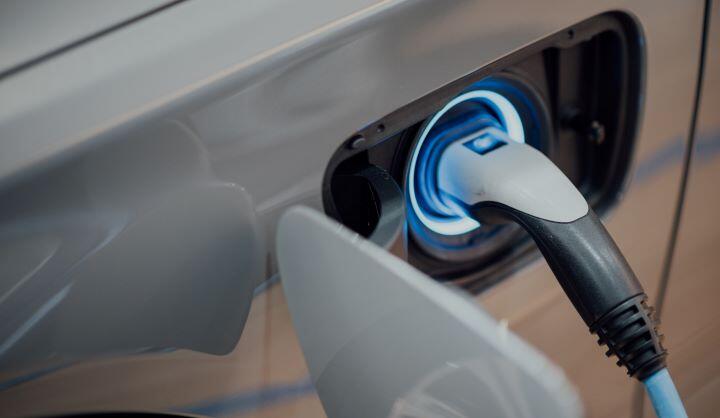- August 30, 2023
- Infrastructure
The widespread adoption of electric vehicles (EVs) is poised to affect cities' infrastructure significantly. As the US federal fleet aims to go fully electric by 2035, cities nationwide must address various infrastructure features. First and foremost, establishing a robust charging infrastructure network will be vital. This will require substantial investment in installing public charging stations, including fast-charging options in convenient locations like public parking lots and streets.
Moreover, the transition to EVs will necessitate careful assessment and potential upgrades to the existing power grid capacity. The heightened demand for electricity due to EV charging could strain the grid, prompting cities to reinforce the infrastructure and integrate innovative grid technologies. Urban planning and zoning will also play a pivotal role in facilitating the integration of EVs into cities' infrastructure. It will be crucial for cities to incorporate EV charging provisions during the planning and development of residential and commercial areas. This might involve mandating charging stations in parking structures and updating building codes accordingly.
Retrofitting existing parking facilities to accommodate EV charging is another crucial consideration. Cities will need to allocate dedicated spaces for EV charging, establish charging fees or incentives, and potentially redesign parking structures to accommodate the necessary charging equipment. Cities like Portland and Austin have already taken steps in this direction by incorporating EV charging stations into their parking facilities and offering discounted parking rates for EVs.
As EV adoption rises, careful traffic management around charging infrastructure will become imperative. Cities will need to analyze and optimize traffic flow to prevent congestion and ensure efficient access to charging stations. Furthermore, cities may need to develop strategies for managing and maintaining their EV fleets as the federal fleet transitions to electric. This could involve creating dedicated charging infrastructure and maintenance facilities for government-owned EVs.
How can cities address the challenges of EV infrastructure?
In a recent interview, Allie Kelly, executive director of the sustainability and transportation nonprofit The Ray, shared valuable insights into the challenges and opportunities surrounding EV adoption in the United States. The Ray has piloted several new technologies in the EV and charging space, particularly in the southern United States, including solar powered vehicle charging and smart road features. Kelly emphasized the complexities of electrification, as this is a complex undertaking, stressing the importance of data-driven decision-making and collaborative efforts among stakeholders.
An important aspect of bringing together stakeholders is including rural cities and counties, municipal and regional leaders, and city renters – particularly those in multi-family homes. For example, the current power grid limitations will increase the difficulty of electrifying heavy-duty vehicles in rural areas. To address this, Kelly recommends municipalities explore public-private partnerships and pull in state-level policymakers. She also suggested that municipalities lead by example and electrify their local fleets while investing in multi-modal electric mobility solutions, like e-scooters or electric bikes. Interestingly, both rural and high-density areas will need special attention, as many urban renters don’t have equitable access to at-home charging. "We want to make sure that [EVs are] accessible,” she said, “for all communities."
These same stakeholders can also be recruited to collaborate on the planning and phased implementation of pilot programs, informed by data analysis. “If we can leverage existing data to inform and lead our investment decisions, not only will that likely lead to more successful investments, but it also helps to position the infrastructure in the way of utilization,” she said, “Using data to understand where the initial infrastructure should go will set it up for success.” One idea is electrifying city-level fleets with established routes, like school buses or refuse trucks, as their movements and energy needs can be predicted through data analysis. Kelly also pointed out that “electric vehicles are higher performing vehicles, so they make a lot of sense for emergency response and police forces.” Currently the state police in Georgia use Tesla vehicles as pursuit vehicles and, according to the data, they outperform gas vehicles.
In addition to the technical and infrastructure concerns, there is also a perspective shift that will need to happen. Kelly emphasized the need for reliability to build confidence and drive EV adoption. “If you invest in infrastructure and it's not operating,” she warned “it sets back people's desire to drive electric vehicles.” Electrifying different government fleets and vehicles first is a good step, as it demonstrates not only the commitment to sustainability but also leads by example. It can also help to tie EV adoption to benefits like lower emissions and improved air quality. Kelly recommended that local leaders “figure out what high level goals might be, and then figure out how electrification leads to those goals.”
Benefits of adopting EVs
As cities adapt to the impact of EVs on their infrastructure, collaborative efforts between governments, utilities, and private stakeholders will be crucial, as emphasized by Kelly above. Partnerships with automakers, charging infrastructure providers, and energy companies can facilitate the development of comprehensive solutions. Additionally, leveraging data and advanced technologies can help optimize the placement of charging stations, monitor grid capacity, and manage traffic flow around charging infrastructure.
Cities need to engage in dialogue with residents, businesses, and transportation providers. This can involve educational campaigns to raise awareness about EV benefits, incentives for EV adoption, and collaborations with ride-sharing companies to encourage the use of electric vehicles. By embracing the electrification of transportation, cities can reap numerous benefits beyond reduced emissions. Electric vehicles can improve air quality, reduce noise pollution, and enhance energy independence. Furthermore, cities can position themselves as leaders in sustainable mobility, attracting investments and fostering innovation in the EV sector.
While the specific impact of EVs on cities' infrastructure will vary based on factors such as population density, existing infrastructure, local policies, proactive planning, and investment will be necessary to accommodate the growing demand for electric vehicles. By addressing the challenges and seizing the opportunities presented by EVs now, cities can pave the way for a cleaner, more efficient, and sustainable future.




